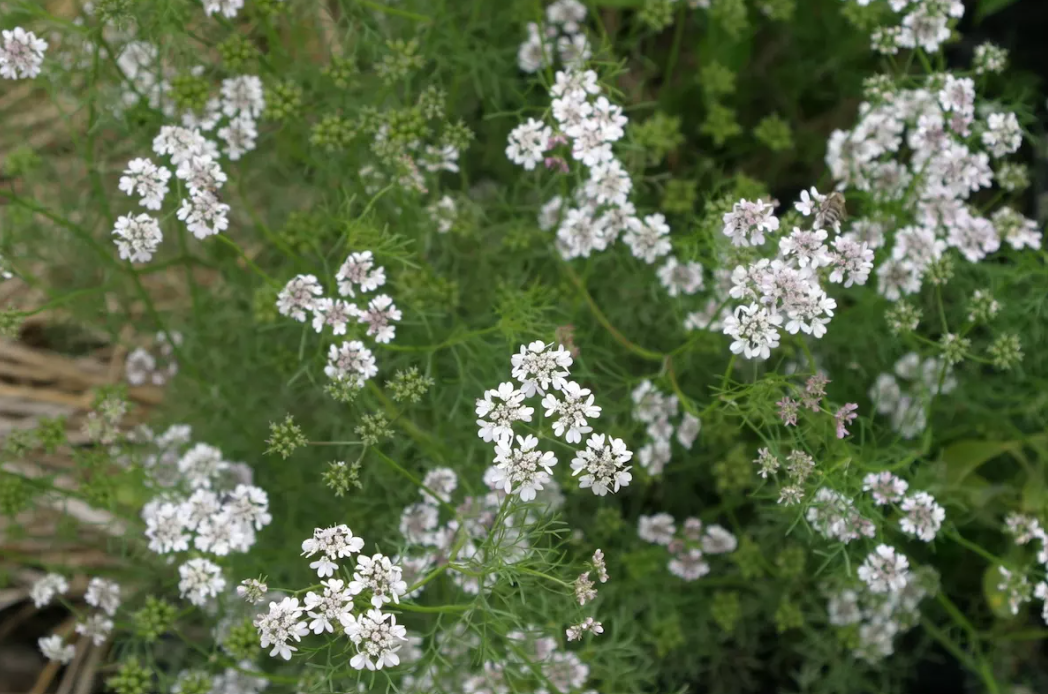Product Description
Production Method
The oil is produced by steam distillation of the fresh herb brought to its unripe fruition (green fruit) state. A concrete and absolute are produced by solvent extraction from the same.
Uses
In Perfumery, in fine fragrances for its unique highly aldehydic notes – a rarity when 100% natural. “The oil is used […] to enhance the top-notes of chypres both in females and male fragrances, and also finds application in the top notes of colognes.” Burfield, T. “Natural Aromatic Materials – Odours & Origins” (2000). In Flavors, especially in Far Eastern, Mexican, Middle-Eastern flavor applications. “The oil is used in seasoning blends and citrus flavors. Coriander leaf oil adds a very attractive character to orange and mandarin flavors and can be used in traces in other citrus flavors.” Wright, J. “Flavor Creation” (2004). In Aromatherapy, Its “anti-inflammatory and sedative properties with no-known contra-indications” make it an interesting oil to treat “stress, anxiety, insomnia, and gastritis.” (Franchomme, P.; Jollois, R.; Pénoël, D. “L’Aromathérapie Exactement” (2001).
Botanical Origin & Historiography
Coriander is native to regions spanning from Southern Europe and Northern Africa to Southwestern Asia. First attested in English in the late 14th c., the word “coriander” derives from the Old French coriandre, which comes from Latin coriandrum, in turn from Ancient Greek κορίαννον koriannon (or κορίανδρον koriandron), possibly derived from or related to κόρις kóris (a bed bug), and was given on account of its fetid, bed bug-like smell. The earliest attested form of the word is the Mycenaean Greek ko-ri-ja-da-na (reconstructed as koriadnon, similar to the name of Minos’s daughter Ariadne) which later evolved to koriannon or koriandron, and koriander (German). Cilantro is the Spanish word for coriander, also deriving from coriandrum. It is the common term in American English for coriander leaves, due to their extensive use in Mexican cuisine. Coriander grows wild over a wide area of Western Asia and Southern Europe. About half a liter of coriander mericarps was recovered from the tomb of Tutankhamon, and because this plant does not grow wild in Egypt, archeologists Zohary and Hopf interpret this find as proof that coriander was cultivated by the ancient Egyptians. The Ebers Papyrus, an Egyptian medical text dated to around 1550 BC, describes coriander’s medicinal and culinary uses. All parts of the plant are edible, but the fresh leaves and the dried seeds are the parts most traditionally used in cooking, Coriander is used in cuisines throughout the world. The leaves are variously referred to as coriander leaves, fresh coriander, Chinese parsley, or (in the US and commercially in Canada) cilantro. The leaves have a different taste from the seeds, with citrus overtones. The fresh leaves are an ingredient in many foods, such as chutneys and salads, salsa, guacamole, and as a widely used garnish for soup, fish and meat. As heat diminishes their flavor, coriander leaves are often used raw or added to the dish immediately before serving. The leaves spoil quickly when removed from the plant, and lose their aroma when dried or frozen. The essential oil from coriander leaves and seeds contain mixed polyphenols and terpenes, including linalool as the major constituent of seed oil; and aldehydes as the major constituents of the leaf oil accounting for the aroma and flavor of coriander.
